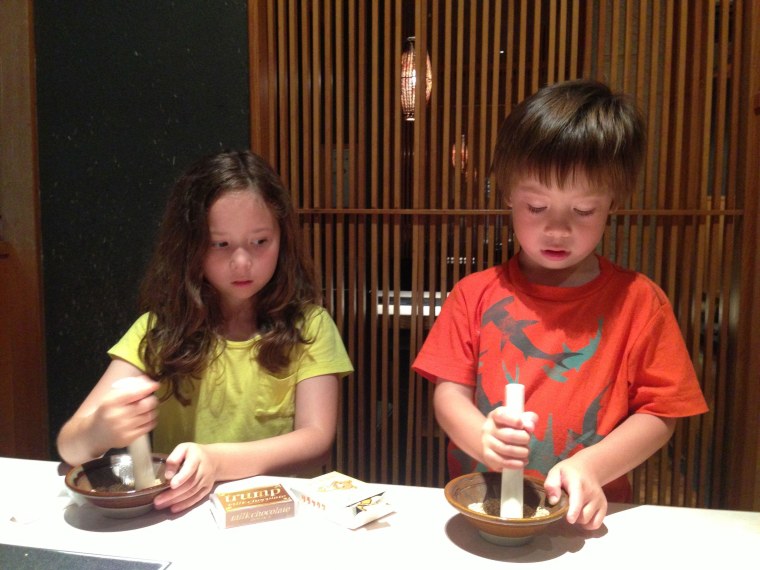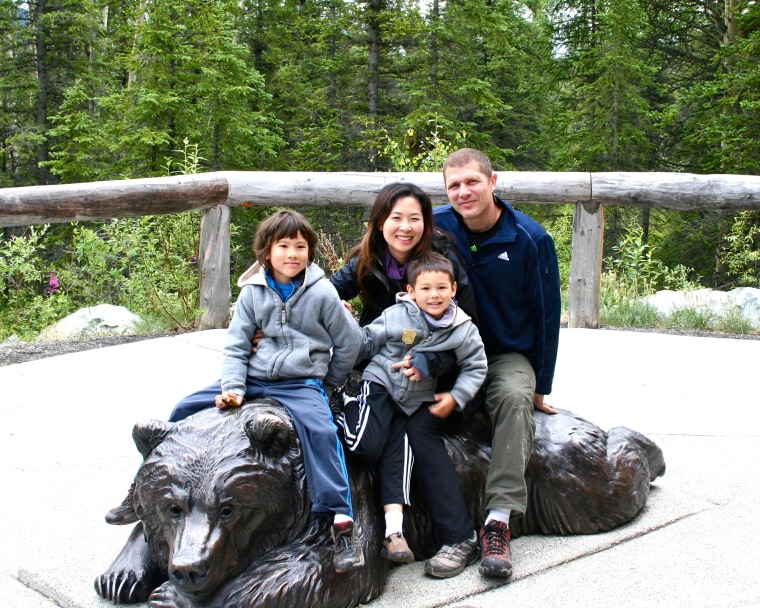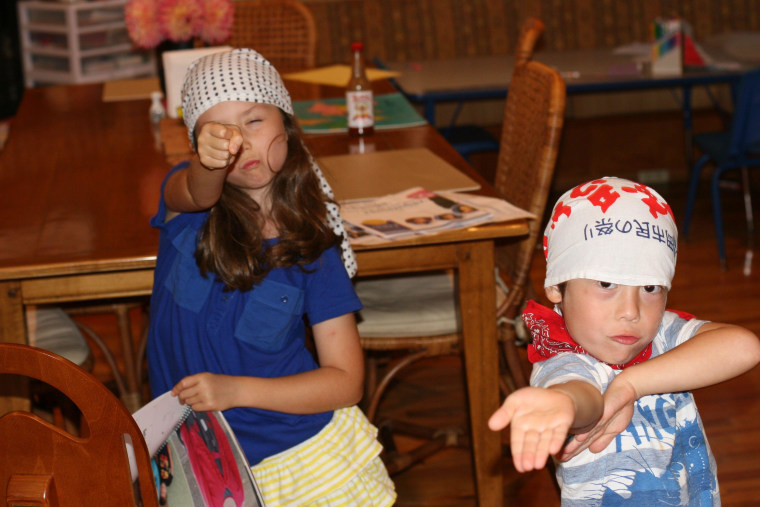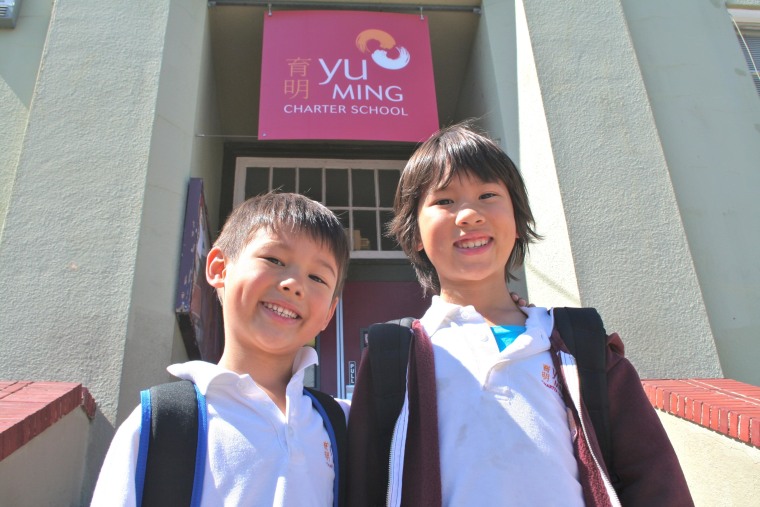Growing up in Palo Alto, California, Mika Tanner remembered her mother’s insistence on speaking to her exclusively in Japanese.
“She’d watched so many of her friends’ children lose their Japanese and was terrified that would happen to me,” Tanner said. “If I didn’t speak in Japanese, she would just pretend that she didn’t hear me. Which was really effective.”

Now a mother to nine-year-old Maya and six-year-old Kenzo, Tanner wants to ensure that her family’s first language is passed along to her children. But instead of using her mother’s strategy, she has another resource available: Yujin Gakuen, a Japanese dual immersion elementary school in their town of Eugene, Oregon.
“I can pack the kids Japanese lunches and they’re not embarrassed...Japan is cool, which is very different from when I was growing up.”
Tanner’s family is one of many American families opting into this educational opportunity. According to the Center for Applied Linguistics, dual language immersion programs began in the United States in 1971, with Spanish and French dominating as the most common languages. But in recent years, Asian language programs have surged in popularity, initially with Japanese and Hawaiian, and now Mandarin, Korean and Vietnamese.
The choice is popular with second-generation, Asian-American families and interracial families who are seeking resources to preserve their language and heritage for their children. In fact, many second-generation, Asian Americans who grew up in America mainly speaking English, choose to enroll their children in immersion programs with the hope that they can reclaim their family's mother tongue.

Thuy Vo Dang is one of the parents campaigning to bring California’s first Vietnamese immersion program to Garden Grove, which is home to the largest Vietnamese-American population in the country. Dang said her generation grew up in the U.S. ashamed to speak in their native tongue, and doesn’t want the same fate for her children.
“Half the battle is the confidence factor,” Dang said. “Having [dual immersion] says that this is a valued language in society and core to their American identity. Being bilingual and bicultural becomes a valued trait, and not just a family identity.”
“We don’t know what the world is going to be when they grow up...But as a parent, you want them to have everything. This is going to give them more opportunities.”
Tanner also shared this belief: “I can pack the kids Japanese lunches and they’re not embarrassed,” she says. “Everybody knows what everything is, and think it’s cool. Japan is cool, which is very different from when I was growing up.”
Christine Wu-Dittmar is one of the founding families of Yu Ming Charter School, a K-8 Mandarin immersion school in Oakland, California. She said she and her husband always wanted their children, a third grader and kindergartener, to learn Mandarin, not only to remain close to their heritage, but for their futures.

“We don’t know what the world is going to be when they grow up,” Wu-Dittmar said. “But as a parent, you want them to have everything. This is going to give them more opportunities.”
Demand for these programs can outpace capacity. For the 2014-15 school year, Yu Ming received over 160 applications for 52 kindergarten slots. Other immersion schools often retain waiting lists longer than their admitted student lists.
Yet, dual immersion is not for everyone. School administrators often have to prepare new families for the rigor and tradeoffs of dual immersion programs.
Uyen Tieu, Dean of Elementary Instruction at the Stafford Municipal School District in Houston, Texas, helped launch a Vietnamese immersion program at their elementary school in 2010. While the program now boasts 85 students in kindergarten through the fourth grade, Tieu remembered trying to pitch the curriculum to skeptical parents.
“If you walk down the corridor, students will say nine out of ten, I like learning Chinese"
“Parents have to be patient because they’re not going to see results immediately,” Tieu said. “You need to give it at least one semester before you see the student blossom.”
When this happens, Yu Ming’s Founding Principal Laura Ross said the students become more comfortable and motivated to learn. “If you walk down the corridor, students will say nine out of ten, I like learning Chinese,” Ross said. “They know why they’re here and they’re excited about it.”
But dual language immersion programs are not only attractive to native-speaking families. Since the dual immersion model relies on 50 percent native and 50 percent non-native speakers, schools try to recruit students of diverse racial and ethnic backgrounds.

When Tihanna McCleese was searching for educational alternatives for her twin sons, she was very interested in Yu Ming, despite the fact that her family did not speak Mandarin. The transition was rocky. While one son adjusted easily, the other resisted.
“He cried just every single day,” McCleese said. “He refused to participate, threw tantrums and was disruptive.”
The school worked closely with McCleese to devise pedagogical strategies to help her son feel more comfortable. Now both of McCleeese’s sons are thriving. Yet, the demands haven’t ended.
“The homework gets harder and harder, and we can’t help them,” she said. They often rely on after school homework club and other support resources from Yu Ming. “Every year we have the talk if we have what it takes to continue.”
Yet, McCleese remains committed, and hopes her sons can continue their Mandarin education through high school. She remembered a recent conversation one of her sons had with a Chinese cashier at a restaurant supply store. “She was blown away by this accent from a little Black boy. Just couldn’t believe it. Little things like that make me know it’s worth it in the end.”
